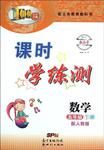题目内容
12.New Zealand EducationCompulsory Education
Compulsory education starts at age 5 and ends at age 16.
Class Size
The number of students in a class is 30 students.
Classrooms
Students from Years 5-8 stay in the same classroom for most subjects and move to other classrooms only for specific subjects.In Year 9,students take some courses With their homeroom class and some optional classes with students from different classes.Starting from Year 10,students no longer stay in the same classroom most of the time.They go to different classes according to their own choices and abilities.
Term Dates
A school year starts in January and ends in December.There are four terms in a year.Each term is about 10 weeks.
Class Schedule
School starts at around 8:30 and ends at 15:15.There are only five periods a day and a period is about an hour long.In the morning,around 10:30,there will be a 20-minute break when students usually have some snacks during this time.There is a lunch period at around 12:40 for about an hour.
Teachers
Teachers have to teach students of different year level at the same time.Most teachers teach students from at least three to four different year levels.Besides,quite a number of teachers teach more than one subject.This is because the fact that many courses are optional.
61.This passage is most probably taken fromA.
A.an educational book B.a sport magazine
C.a traveling guide D.a film website
62.When you are in your 10th school year,you mayD.
A.choose and take some optional courses with your homeroom class
B.stay with your classmates in the same classroom for all the subjects
C.have both required and optional classes with the same classmates
D.choose different classes according to your own choices and abilities
63.The meaning of the underlined word"optional"in Paragraph 3 is close to"B".
A.limited B.selective C.sensitive D.typical
64.What do the students usually do around 10:40 in the morning?B
A.Have class.B.Have snacks.C.Have lunch.D.Have sports.
65.According to the passage,why can many teachers teach more than one subject?A
A.Because many courses are optional.
B.Because there are not enough classrooms.
C.Because many of the subjects are too easy.
D.Because the teachers are more than enough.
分析 本文为广告应用文,介绍了新西兰的义务教育,包括班级设置、学校作息、师资情况等.
解答 61---65 ADBBA
61.答案A.文章出处题.根据标题"New Zealand Education Compulsory Education"新西兰教育 义务教育,可知本文主要介绍新西兰的教育.故选A.
62.答案D.细节理解题.根据Classrooms部分的"Starting from Year 10,students no longer stay in the same classroom most of the time.They go to different classes according to their own choices and abilities."可知,10年级的时候,学生可以根据自己的选择和能力去不同的班级.故选D.
63.答案B.词义猜测题.optional意为"选择的,选修的",此处指选修课程.故选B selective选择的.limited限制的,sensitive敏感的,typical典型的.
64.答案B.细节理解题.根据Class Schedule部分的"In the morning,around 10:30,there will be a 20-minute break when students usually have some snacks during this time."可知,10:30的时候有大约20分钟的时间休息和吃零食.故选B.
65.答案A.细节理解题.根据Teachers部分的"Besides,quite a number of teachers teach more than one subject.This is because the fact that many courses are optional."可知,老师们一个人教几门课主要因为许多课程是选修.故选A.
点评 做广告类阅读的五大技巧
1.先题后文法:"先题后文"指的就是先读试题,了解试题的考查点,再根据试题的要求快速阅读短文.
2.题干定向法:如果题干的问题与原文中的相应句段基本相同,则可直接对号入座;如果题干的问题与原文中的相应句段有较大出入,则要进行一定的处理,这个"处理"是多方面的,它可能包括对原文进行同义变换、对概念进行解析、对事实进行归纳、将具体问题抽象化或将抽象问题具体化、将文中提到的原则或规则进行实际运用等等.
3.错误排除法:一般说来,对于那些与文意明显不符或与文章内容不相关的选项比较容易排除,但有些选项与文章内容相符,却与题干问题不吻合,即属答非所问的情形,也应作为错误项予以排除,尤其是那些从文章中摘录的句子,要特别小心,它们很有可能是干扰项.除了验证其是否能回答所提问题外,还要看它是否回答了问题的主要方面,也就是说看它是不是最佳答案,如果它只能回答所提问题的一个侧面或还有比它更合适的选项,都要毫不犹豫地将其排除.
4.信息补全法:前面讲到,广告类阅读材料的一大特点就是缩略词和省略句多.考生在做题时,要注意根据文章的上下文语境将省略句补充完整,以便于正确地理解和答题.

 百年学典课时学练测系列答案
百年学典课时学练测系列答案| A. | agreement | B. | religion | C. | decision | D. | belief |
| A. | out of order | B. | out of touch | C. | out of sight | D. | out of work |